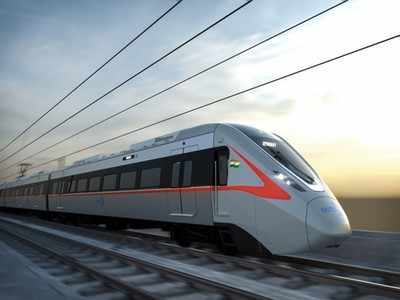- News
- Business News
- India Business News
- Drones to gather data for implementing Delhi-Meerut rapid transport system
Trending
This story is from October 16, 2020
Drones to gather data for implementing Delhi-Meerut rapid transport system
The Delhi-Meerut Regional Rapid Transit System (RRTS) project will be implemented by using drones to gather the required data. An integrated transport plan worked out for the National Capital Region (NCR) envisages the RRTS — which is supposed to be three times faster than metro — for connecting regional centres.

(Representative image)
NEW DELHI: The Delhi-Meerut Regional Rapid Transit System (RRTS) project will be implemented by using drones to gather the required data. An integrated transport plan worked out for the National Capital Region (NCR) envisages the RRTS — which is supposed to be three times faster than metro — for connecting regional centres. While eight corridors have been identified so far, three of them have been prioritised — Delhi-Ghaziabad-Meerut; Delhi-Panipat and Delhi-Gurugram-Alwar.
The aviation ministry and Directorate General of Civil Aviation (DGCA) have conditionally allowed NCR Transport Corporation (NCRTC) to deploy remotely piloted aircraft system (RPAS) or drones for data acquisition for mapping and implementation of web-based geographical information system (GIS) platform for Delhi-Meerut RRTS.
The NCRTC website described RRTS as “a dedicated, high speed, high capacity commuter service connecting regional nodes in NCR different from conventional railway as it will provide reliable, high frequency, point to point regional travel at high speed along dedicated path way. RRTS is different from metro as it caters to passengers looking to travel relatively longer distance with fewer stops and at higher speed.”
Aviation ministry joint secretary Amber Dubey said the permission for drone surveillance will “help them (NCRTC) in effective aerial surveillance and project planning. The granting of these approvals is in line with the government’s objective of promoting use of drones for mass benefit.”
Drones will be used from sunrise to sunset and within visual line of sight — meaning operated by someone who can see them at all times and not remotely from some other place. NCRTC has been asked to get insurance to cover any damage to third party resulting from any accident during drone operation.
The aviation ministry and Directorate General of Civil Aviation (DGCA) have conditionally allowed NCR Transport Corporation (NCRTC) to deploy remotely piloted aircraft system (RPAS) or drones for data acquisition for mapping and implementation of web-based geographical information system (GIS) platform for Delhi-Meerut RRTS.
The NCRTC website described RRTS as “a dedicated, high speed, high capacity commuter service connecting regional nodes in NCR different from conventional railway as it will provide reliable, high frequency, point to point regional travel at high speed along dedicated path way. RRTS is different from metro as it caters to passengers looking to travel relatively longer distance with fewer stops and at higher speed.”
Aviation ministry joint secretary Amber Dubey said the permission for drone surveillance will “help them (NCRTC) in effective aerial surveillance and project planning. The granting of these approvals is in line with the government’s objective of promoting use of drones for mass benefit.”
The conditional exemption is until December 31, 2020, or until the full operationalisation of Digital Sky Platform, whichever is earlier. The conditions focus on safe usage of drones and requires NCRTC to get “necessary clearances from local administration; ministries of defence and home; Indian Air Force and Airport Authority of India (AAl) prior to operation of” RPAS.
Drones will be used from sunrise to sunset and within visual line of sight — meaning operated by someone who can see them at all times and not remotely from some other place. NCRTC has been asked to get insurance to cover any damage to third party resulting from any accident during drone operation.
End of Article
FOLLOW US ON SOCIAL MEDIA















